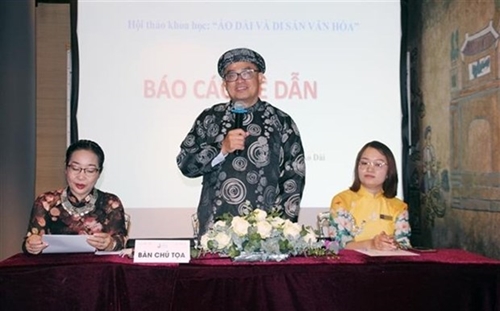Of the 13 UNESCO-recognized intangible cultural heritages in Vietnam, seven were closely related to the garment, the experts told a seminar titled “Ao Dai and Cultural Heritage” held recently at the Ao Dai Museum in Ho Chi Minh City.
Huynh Ngoc Van, director of the museum, said numerous “ao dai” models had been collected and showcased at many exhibitions and seminars since 2018.
    |
 |
|
Dr. Nguyen Duc Tri, an expert from the HCM City University of Economics, is highlighting the value of “ao dai” at a seminar held last week at the Ao Dai Museum in HCM City. |
They had helped underline the garment’s role as a significant intangible cultural heritage and gradually garner public interest, she said.
“Feedback from these exhibitions and seminars are beneficial to the conservation and promotion of the “ao dai”.”
Artist Xuan Hoa, who heads the Quan Ho Kinh Bac Club, said “ao dai” was the main costume used in folk arts all over the country.
“It is essential for authorities to recognize the art of tailoring “ao dai” as a national intangible cultural heritage in future,” he added.
Dr. Nguyen Duc Tri, Director of the HCM City University of Economics’ Institute of Tourism, said referring to the garment, “These are invaluable treasures that cannot be forgotten.”
Tourism should not only be about exploiting traditional cultures but finding ways to revive and make it meaningful to locals’ lives, he added.
Authorities need to collate all information about intangible cultural heritages and create interesting tourism products to educate Vietnamese about their traditional values, he added.
The experts have been for many years seeking the recognition of “ao dai” as a national intangible cultural heritage.
They said the traditional dress offers a comprehensive evaluation of history. Through its function and the habit of using, “ao dai” features the social and cultural value, art and cultural identity of the Vietnamese tradition.
Source: VNA